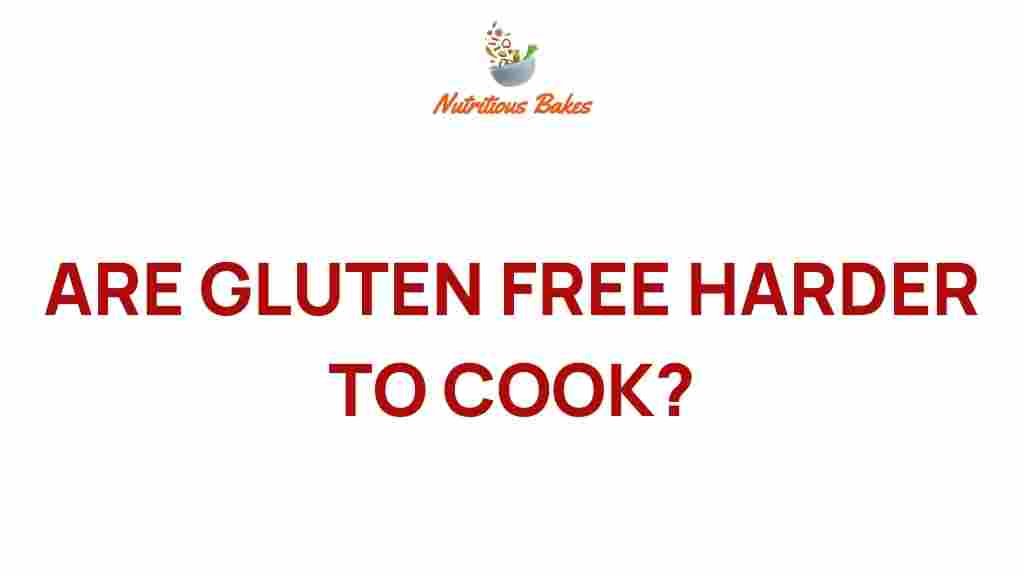Is Cooking Gluten-Free More Challenging?
Gluten-free cooking has become increasingly popular as more individuals adopt gluten-free diets for health, lifestyle, or dietary preferences. However, many wonder if cooking gluten-free is truly more challenging than traditional cooking. This article aims to unravel the truth behind gluten-free cooking challenges while offering culinary tips, recipe modifications, food alternatives, and kitchen techniques to make the transition seamless.
Understanding Gluten and Its Impact
Gluten is a protein found in wheat, barley, and rye. For those with celiac disease or gluten sensitivity, consuming gluten can lead to serious health issues. As a result, many people must seek gluten-free options. This dietary shift often presents unique cooking challenges, primarily due to the absence of gluten, which plays a vital role in the texture and structure of many foods.
Common Cooking Challenges
When transitioning to gluten-free cooking, individuals may encounter several challenges, including:
- Texture Differences: Gluten provides elasticity and chewiness, making baked goods airy and fluffy.
- Ingredient Substitutions: Finding suitable gluten-free alternatives for traditional ingredients can be difficult.
- Cross-Contamination Risks: Ensuring that gluten-free foods are not contaminated with gluten during preparation.
- Flavor Variability: Some gluten-free ingredients may alter the flavor profile of recipes.
Important Culinary Tips for Gluten-Free Cooking
To mitigate the challenges of gluten-free cooking, here are some effective culinary tips:
- Learn about Gluten-Free Flours: Familiarize yourself with popular gluten-free flours, such as almond flour, coconut flour, and rice flour. Each has its unique properties and can be used in various recipes.
- Use Binding Agents: Since gluten acts as a binder, consider using eggs, flaxseed meal, or chia seeds to help hold your dishes together.
- Experiment with Blends: Gluten-free flour blends often produce better results than single types of flour. Look for blends specifically designed for baking.
- Don’t Skimp on Moisture: Gluten-free baked goods can dry out quickly. Add extra moisture with ingredients like yogurt, applesauce, or pureed fruits.
Recipe Modifications for a Gluten-Free Diet
Transforming traditional recipes into gluten-free versions can be easier than you think. Here are steps to help you modify recipes:
- Identify the Gluten-Containing Ingredients: Review the recipe and highlight all ingredients containing gluten.
- Choose Gluten-Free Alternatives: Replace wheat flour with gluten-free flour, soy sauce with tamari, and breadcrumbs with ground nuts or gluten-free oats.
- Adjust Liquid Ratios: Gluten-free flours may absorb more or less liquid than traditional flours. Be prepared to adjust the ratios accordingly.
- Test and Tweak: After baking or cooking, taste the dish and make further adjustments as necessary. Document your changes for future reference.
Food Alternatives for Common Ingredients
Finding the right substitutes for gluten-containing ingredients can simplify gluten-free cooking. Here are some popular alternatives:
- Pasta: Use gluten-free pasta made from rice, quinoa, or lentils.
- Bread: Opt for gluten-free bread made from almond flour or chickpea flour.
- Cereals: Choose gluten-free grains such as quinoa, millet, or buckwheat.
- Thickeners: Instead of wheat flour, use cornstarch, arrowroot powder, or tapioca starch to thicken sauces and soups.
Essential Kitchen Techniques for Gluten-Free Cooking
Implementing specific kitchen techniques can enhance your gluten-free cooking experience:
- Separate Cookware: Use distinct utensils and cookware for gluten-free foods to prevent cross-contamination.
- Read Labels Carefully: Always check for hidden gluten in packaged foods, sauces, and condiments.
- Prep in Advance: Prepare gluten-free meals in batches to save time and reduce the risk of errors during cooking.
Troubleshooting Common Gluten-Free Cooking Issues
Even with careful preparation, you may still face challenges when cooking gluten-free. Here are some common issues and solutions:
- Issue: Crumbly Texture
Solution: Add more binding ingredients like eggs or use a gluten-free flour blend designed for baking. - Issue: Dryness
Solution: Increase the moisture in your recipe by adding yogurt or applesauce. - Issue: Unpleasant Flavor
Solution: Experiment with spices and herbs to enhance the flavor profile of your dish.
Conclusion: Embracing Gluten-Free Cooking
While gluten-free cooking may present unique challenges, it is entirely possible to create delicious meals that cater to gluten-free dietary preferences. With the right culinary tips, recipe modifications, food alternatives, and kitchen techniques, home cooks can successfully navigate the world of gluten-free cooking. Embrace the journey and enjoy the exploration of new flavors and textures!
For more information on gluten-free recipes and cooking tips, visit this resource. Also, check out this article for a deeper understanding of gluten-free ingredients.
This article is in the category Tips and created by NutritiousBakes Team
